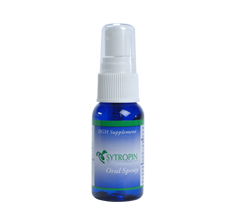Next, the scientist looked at the longer-term effects of the two enantiomers. One group of animals was fed a regular diet, while two other groups' chow was supplemented with one of the two enantiomers. The results were essentially the same. Compared to animals which ate an unsupplemented diet, the muscle cells of animals which were given pure R(+)-Lipoic Acid were able to take up 34% more blood sugar in response to insulin, or 65% more than they did under basal conditions. By contrast, feeding animals the same amount of "lipoic acid" in the artificial S(-)-form had no effect on the animals' ability to clear blood sugar.
In fact, even giving the animals two-thirds more S(-)-enantiomer than had been effective when using R(+)-lipoic acid, still led to no clear-cut improvement: while there did appear to be an increase in the animals' muscle cells' glucose uptake under the influence of insulin, the scientists found that the apparent increase was not strong enough, as compared to their basal intake, to rule out a statistical fluke. 21 And the numbers were about the same (145 vs. 150 pmol/mg muscle mass) when they further upped the dose of the S(-)-form to one that was three times more than what was needed to get clear-cut results with R(+)-lipoic acid!
At the same time, insulin levels in animals that were supplemented with R(+)-Lipoic Acid were pushed down by 17%, proving that the vicious circle of insulin resistance was being put into reverse. By contrast, S(-) lipoic acid actually caused insulin levels to soar 15% higher. 21Another clear sign that the animals were made less insulin resistant was the fact that animals given R(+)-Lipoic Acid experienced reductions of free fatty acids of greater than a third - an extremely important result, granted the role of increased free fatty acids in causing the high blood pressure 14 and killer cholesterol profile 13 seen in "Syndrome X," 12 and their place as a risk factor for cardiovascular disease 14 and sudden death. 16 It was a different story in the other group: free fatty acids in animals fed S(-)-lipoic acid showed no significant change.
Looking down at these animals' cells, scientists could see what had happened. The amount of GLUT-4, the muscles' main glucose transporter, was actually reduced by 19% by S(-) lipoic acid supplementation! 21 Granted R(+)-lipoic acid's ability to increase the cell's responsiveness to insulin, you might expect that it would increase GLUT-4 levels. In fact, levels of GLUT-4 were not affected one way or the other by the R(+)- form. Instead, other studies 19, 22, 23 have shown, R(+)-Lipoic Acid helps the cell to mobilize its glucose transporters, without affecting GLUT levels. These studies found that S(-)-lipoic acid either has no effect on, 23 or actually interferes with, 19 the cell's ability to mobilize GLUTs.
Other aspects of the response to insulin were also improved by R(+)-, but not S(-)-, lipoic acid, including a 33% restoration in the ability to burn glucose for fuel and a 26% increase in the formation of glycogen, the long-chain molecules used to store carbohydrates for quick use by the liver and muscles.
In short, when you take a racemic mixture of R(+)- and S(-)-enantiomers found in conventional "lipoic acid" supplements, R(+)-Lipoic Acid improves insulin resistance, while the S(-)-form actually makes it worse. The results that are seen in clinical trials using the racemate, then, are the net effects of combining the powerful benefits of R(+)-lipoic acid, with the sometimes weaker, and sometimes even harmful, effects of the S(-)- form.
R(+)-lipoic acid, in other words, is not just fighting against insulin resistance: it's fighting against the "evil twin" present in most commercial supplements. Getting rid of the "fifth column" in your supplement frees up the full potential of R(+)-lipoic acid, allowing its full strength to be unleashed in the battle to restore healthy sugar metabolism.
Learn More About The Bottom Line on Glucose Metabolism
Please consult with a health care professional before starting any supplementation program. The information contained on this site is general in nature and Company does not take any responsibility for any errors that may appear. Company has made every attempt to make the information as accurate as possible. However, Company does not warrant its accuracy. Please note that the statements on this web site have not been evaluated by the FDA.








